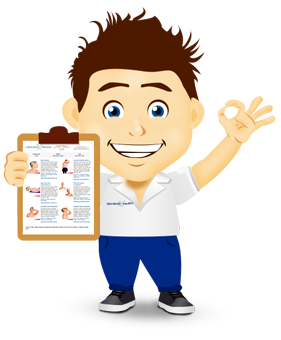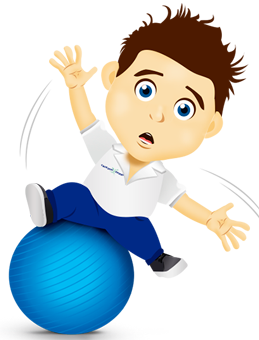
Next steps:
Feel free to read the advice sheet below! To get the full benefit click on 'Start treatment'. By starting the treatment you will get access to weekly rehab programmes online for FREE. You will be able to track your progress, pain levels and we will remind you to do your exercises every day!
Falls Prevention
Falls are a commonly overlooked cause of injury in older adults, accounting for more than 50% of injury related hospitalisations among people over 65 years. This is a major public health issue, costing the NHS over £2 billion, and over 4 million bed days, every year.
Research suggests that approximately 28-35% of people aged over 65, and 32-42% of those of 70 years of age, fall each year; accounting for the most common cause of death from injury in the over 65s (1).
On top of the economic implications, falls can have a huge impact on the quality of life in older people. Following a fall, an older person has a 50% chance of having their mobility seriously impaired and a 10% probability of dying within a year. This leads to a huge loss of confidence and independence, increasing isolation within this population.
However, there is good news!
We do not believe that falls should be seen as 'inevitable' or 'a normal part of ageing'. There are things that can be done help you stay steady on your feet and minimise the risk of falling, which we will cover in this programme.
Causes of falls:
In order to reduce falls, firstly we need to look at the reasons why you may be at risk of falling.
There are a number of factors associated with falls and it is often a combination of these that lead to a fall.
The main influencing factors are related to physiological changes associated with aging; including things such as declining eyesight, reduced muscle strength and long-term conditions affecting mobility.
Factors associated with your environment can also increase your risk of trips and falls, which we call extrinsic factors.
This programme will cover these causes.
Falls can also happen as a result of a medical condition, or dizziness caused by medication or fluctuating blood pressure. These are things that should be managed by your GP or other healthcare providers.
Safety
Now, let's move on to safety.
Consider your environment. Can you eliminate any practical extrinsic factors that may increase the risk of a fall in your home?
- Tidy away any clutter and move any furniture (with assistance) that restricts a clear walk-way from room to room, especially from bedroom to bathroom for toilet trips during the night.
- Are there any rugs, carpets or cables that present a trip hazard? Can these be removed?
- Is there good lighting in the rooms, hallways, landing and stairs allowing you to see any potential trip hazards? Remember to switch a light on before entering any room (keeping a light on at night)
- If you wear indoor shoes or slippers, are they securely fitted to your feet? Avoid back-less footwear and, where possible, laced shoes to further minimise trip hazards.
Exercise
Muscle weakness and balance impairment caused by ageing and disuse, are the most prevalent modifiable risk factors for falls.
Exercise is one of the most effective ways to address this and exercise programmes, in conjunction with risk assessment, has been shown to reduce falls by up to 55%.
Simply increasing your daily activity and building up the level of activity you are doing will, over time, increase your general fitness. Some examples might include (where safe):
- walk to your neighbour's house instead of phoning
- get off the bus one stop earlier and walk home
- stand instead of sitting whilst sorting washing
- when family / visitors arrive, go for a 10 minute walk with them before putting the kettle on
- perform some gentle supported standing activity whilst waiting for the kettle to boil or cleaning your teeth
However, in order to build muscle strength, increase stability and improve balance, it is important to perform specific and tailored exercises.

